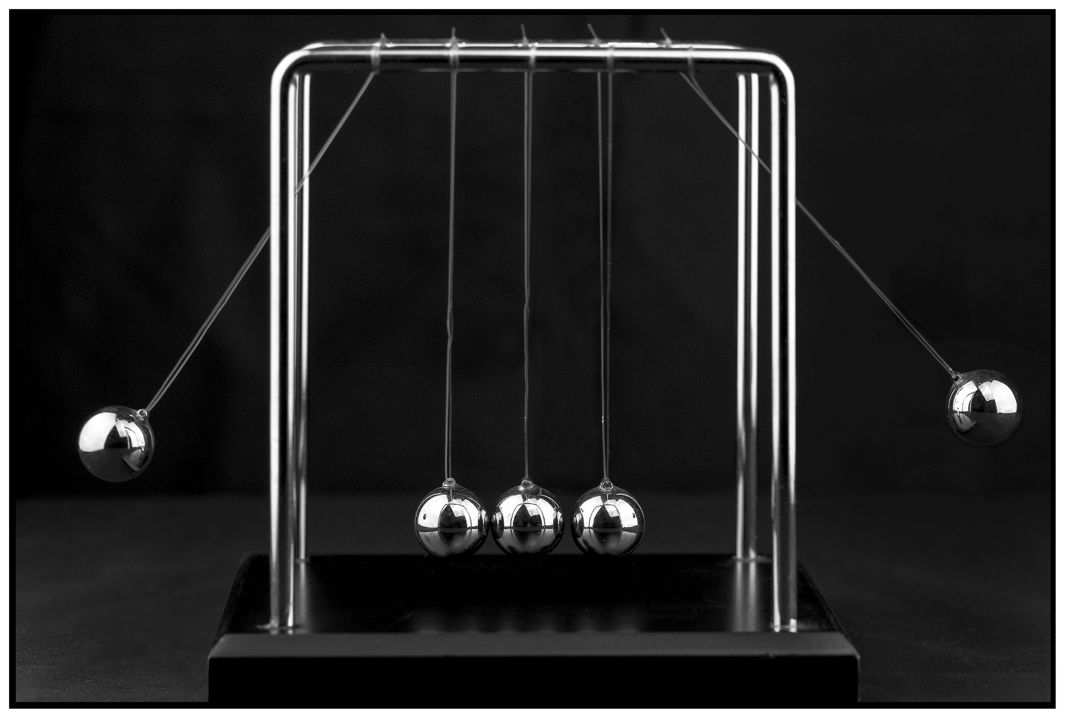How Hannibal’s Sound Designer Makes Music Scary

Photo by Sheila Sund/Flickr
Roman Mars’ podcast 99% Invisible covers design questions large and small, from his fascination with rebar to the history of slot machines to the great Los Angeles Red Car conspiracy. Here at The Eye, we cross-post new episodes and host excerpts from the 99% Invisible blog, which offers complementary visuals for each episode.
This week's edition—about scary music in films and TV—can be played below. Or keep reading to learn more.
People who make horror movies know: If you want to scare someone, use scary music.
There are two fundamental ways to make music scary. The first way is to compose music with lots of screechy, irregular tones, imitating the sounds of screams and distress. It’s a biological trigger for Something terrible is happening right now!
The second way horror movie music makes you feel uneasy is to go the other direction: low grumbling sounds. This is also rooted in biology, since the lowest frequency a species can produce is a function of its body size. Low-frequency sounds mean that something big is nearby.
Mix these two and you’re on your way to creating a classic scary soundtrack. Most of the time, this horror movie music exists outside the world of the story. It’s not heard by the characters, just the audience. But this is not the case in the NBC TV series Hannibal, which tells the story a serial killer named Hannibal Lecter, whom you may know from Silence of the Lambs and Manhunter. The show is kind of a prequel to those stories.
Composer Brian Reitzell’s score for Hannibal lives half in music, half in sound design. You get a sense that it is heard by the characters, inside their imaginations, as it transports you directly into the action. For example, in a scene where Hannibal rides a motorcycle, instead of using the recorded sound of an actual motorcycle, Reitzell creates a new sound in the studio that makes viewers feel like they’re actually riding.
To produce a revving sound, Reitzell slid his fingers up and down the neck of a bass. He mixed it with with castanets to represent the ignition, bowed wooden block to represent the flames from the engine, and added some reverb to create a smoky texture. It’s a sound that evokes the feeling of wind whipping past, the rush of adrenaline, and the engine rumbling below.

Photo by Feliciano Guimaraes/Flickr
The other main character in the series is Will Graham, an FBI profiler who has a knack for getting inside the heads of serial killers to try to catch them. At times, the sound design of Hannibal places the viewer inside Graham’s head.
Executive producer David Slade—who also does the sound mix of every episode—wanted the audience to hear the sounds of of Graham’s brain at work. He created the clicking, crackling sounds of synapses firing by sampling and exaggerating the sounds from a Newton’s cradle.
The bad guy in Hannibal is Hannibal Lecter, of course, but Graham is also wrestling with his own demons. He has the dreamlike visions of a demon they call the Wendigo, which represents both the evil of Hannibal and the evil growing inside himself.

Courtesy of NBC
To represent the Wendigo, Reitzell and Slade wanted a sound that indicated the coming of that character. They knew they wanted something ominous and circular-sounding. They found it in a bullroarer—essentially a piece of wood on a string. It’s one of the oldest instruments.
Slade pitched the sound of the bullroarer up and down to make it scarier. Once paired with the image of the Wendigo, it was a sonic fit, matching the emotions of the visual and augmenting the presence of the Wendigo in the story.
The fact that an internal soundtrack feels appropriate and natural, even in the real world where no “soundtrack” should exist, may be a reason why music soundtracks are a ubiquitous part of the design of movies and television. And why it’s really not a good idea to watch Hannibal right before going to bed.
To learn more, check out the 99% Invisible post or listen to the show.
